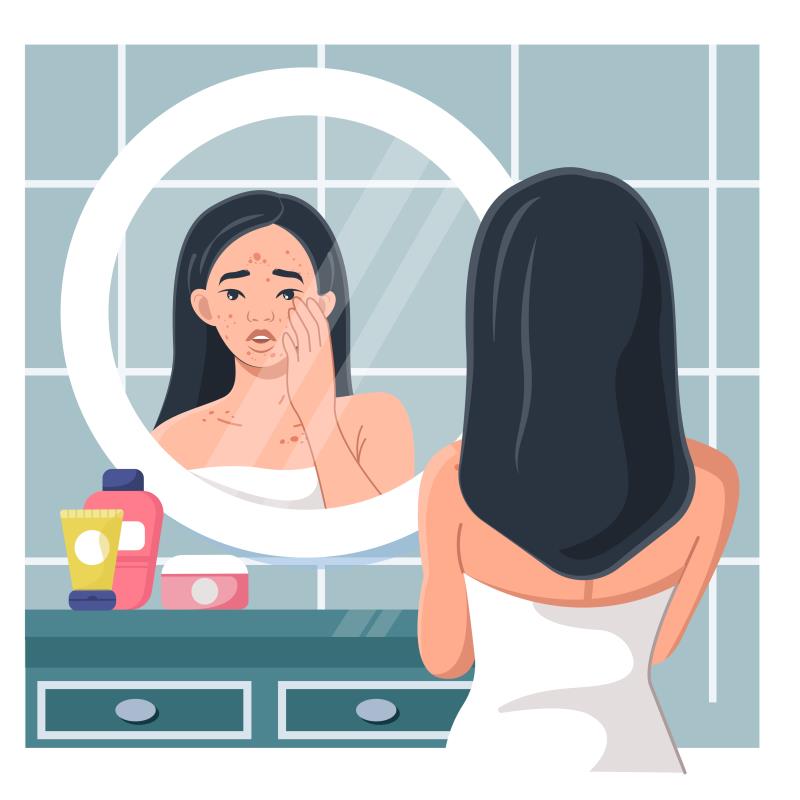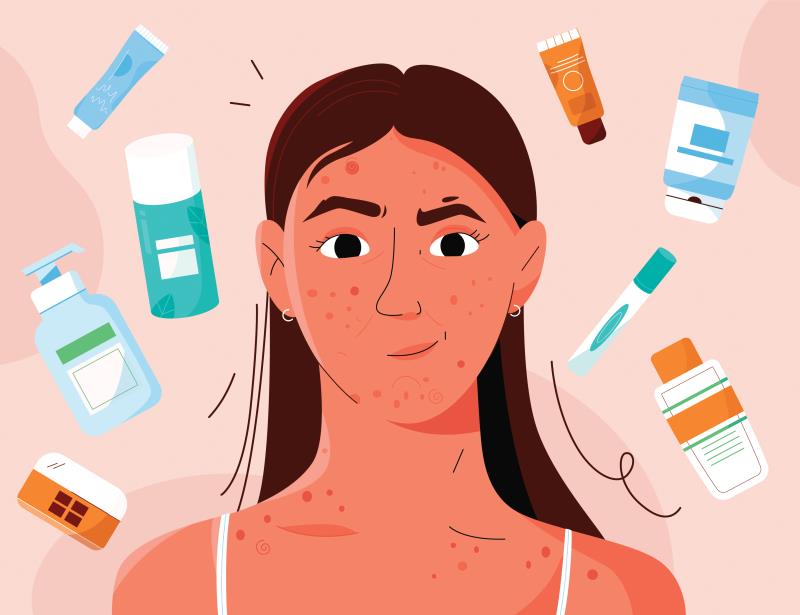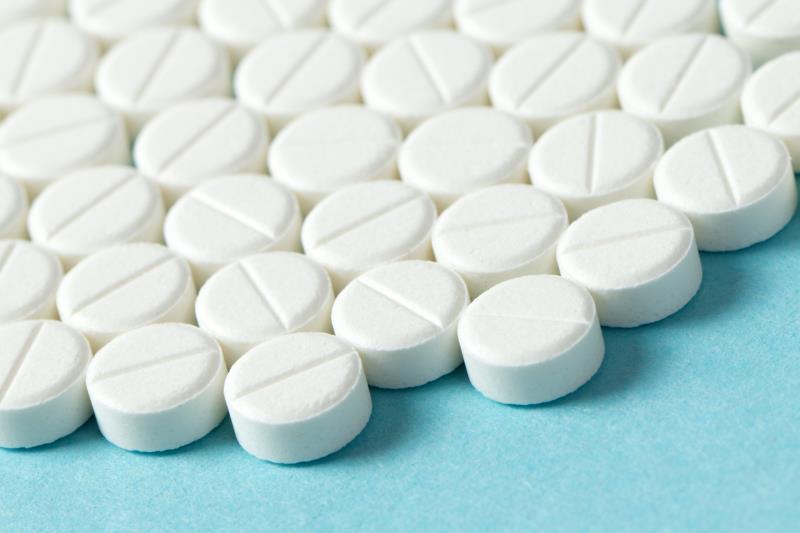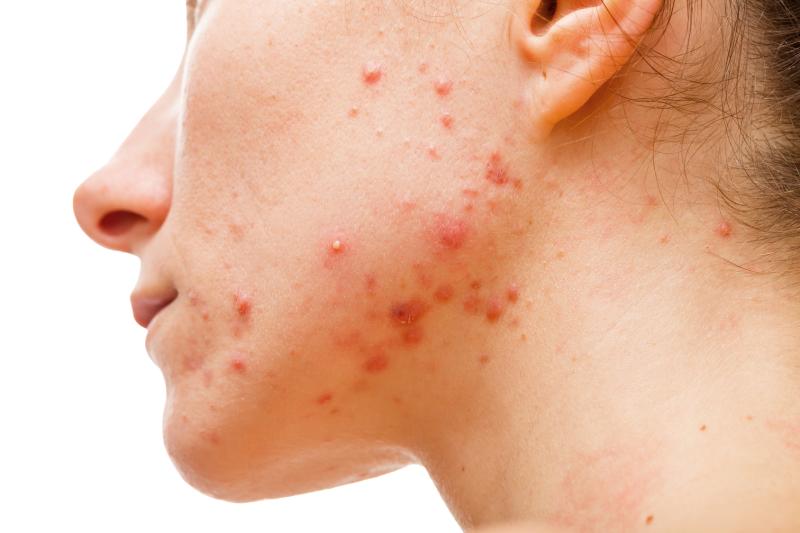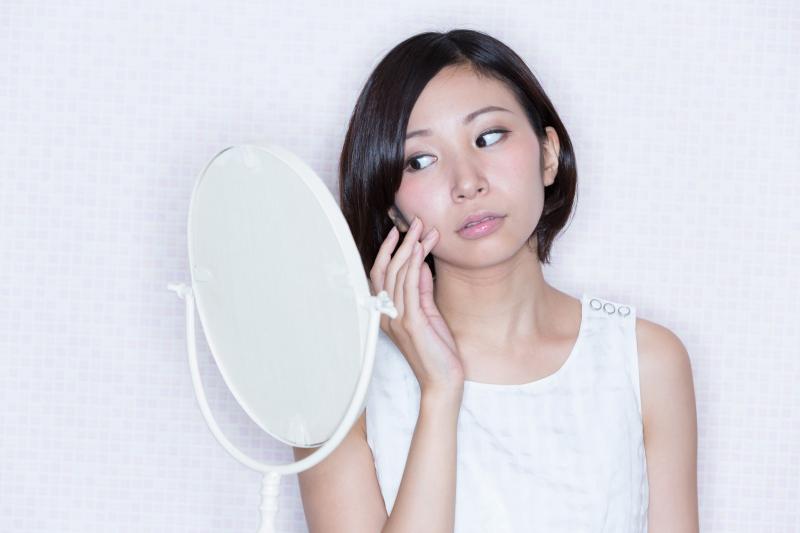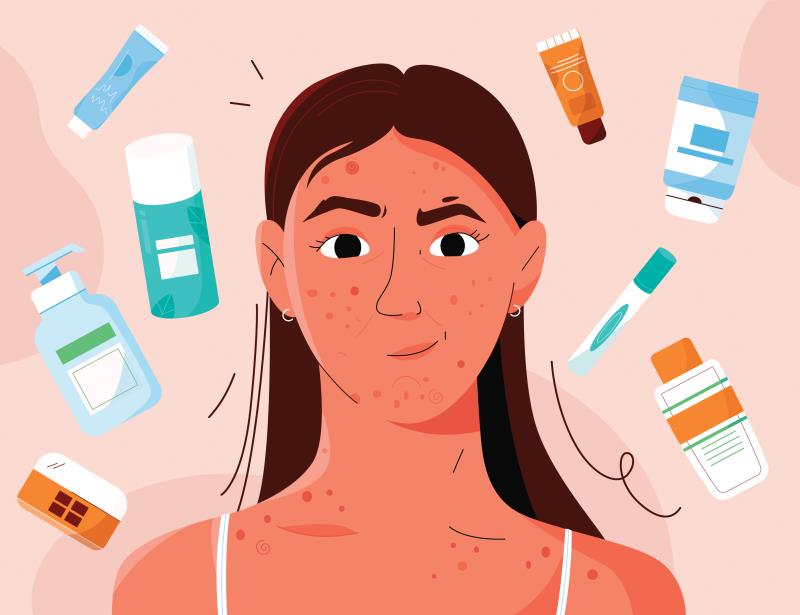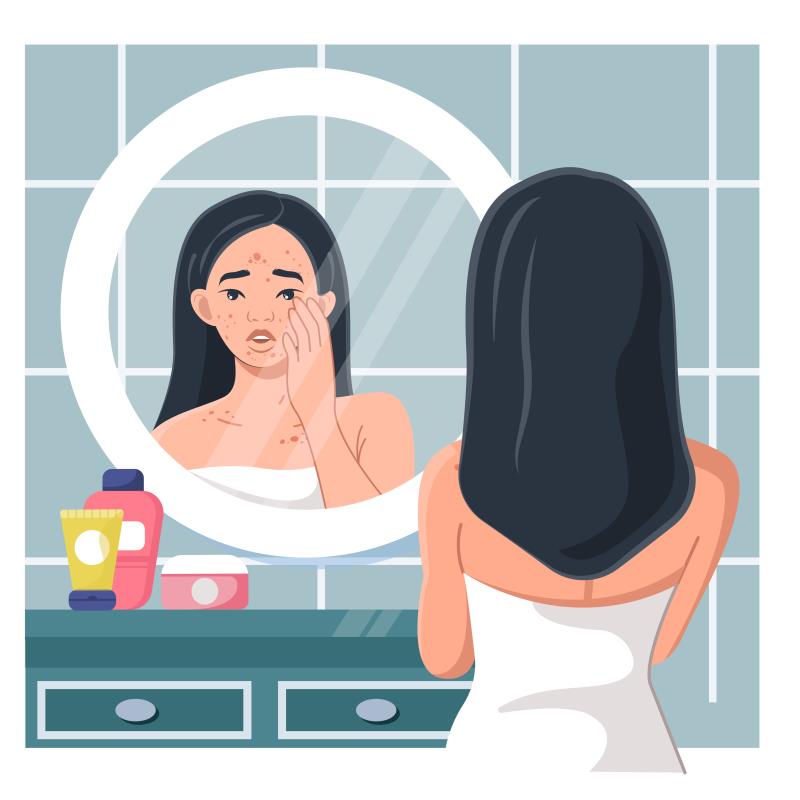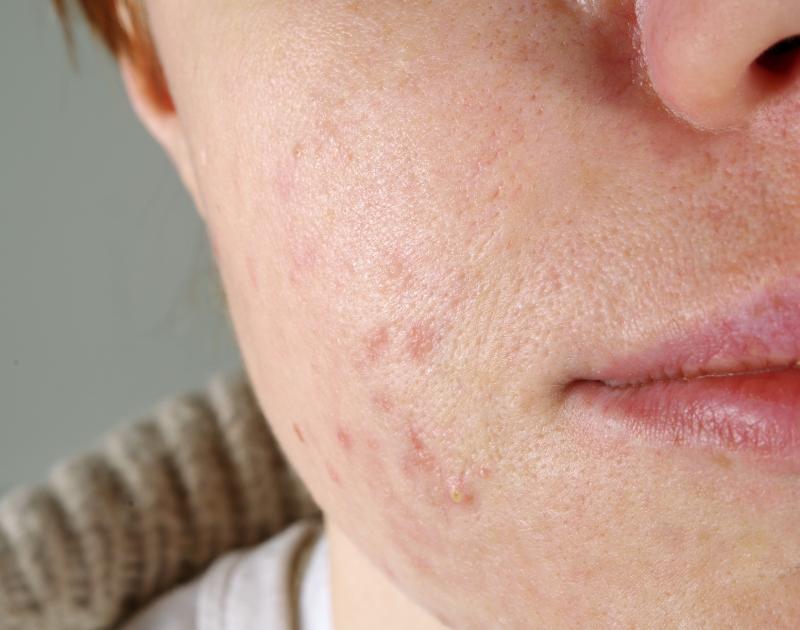Content on this page:
Content on this page:
Overview
Acne vulgaris is chronic inflammatory dermatosis which is notable for
open and/or closed comedones (blackheads and whiteheads) and
inflammatory lesions including papules, pustules, nodules, and cysts as mentioned in
the Introduction section.
Acne has an overall prevalence of 20.5%, with the highest rates noted in
individuals 16 to 24 years of age. The Epidemiology
section discusses prevalence of acne regionally.
Development of acne involves different factors, and the Pathophysiology and Risk Factors section discusses further
about these factors.
Types of acne are based on lesions that occur and sites of distribution. These are enumerated
and described in the Classification
section.
History and Physical Examination
The History section mentions that finding out
on the information of past treatments can be necessary to elicit in the patient
as well as the other contributing factors that are enumerated in this section.
During the Physical
Examination one should inspect the lesions seen and site of
distribution to classify the type of acne the patient has.
Diagnosis
The Evaluation
section enumerates the different scoring methods used in grading acne lesions.
Currently, there is no recommended universal grading or classifying system for
acne. This section also discusses the severity classification by Lehman.
The Differential
Diagnosis section enumerates the different skin diseases that
can be considered in diagnosing if comedones are not present.
Management
The Principles of Therapy section discusses
the goals of therapy and phases of pharmacological therapy for acne.
Topical
agents like retinoids, Azelaic acid, Benzoyl peroxide, antibiotics, salicylic
acid and Clascoterone that are used in the management of ance are discussed in detail
in the Pharmacological Therapy
section. In this section considerations when choosing
topical agent are also enumerated. Oral agents (eg antibiotics,
Isotretinoin, corticosteroids), intralesional corticosteroids, and adjunctive
therapies are also discussed in this section.
In the Nonpharmacological section patient
education, diet, and skin care recommendations are featured and discussed in
detail. Energy-based devices descriptions are also in this section.


